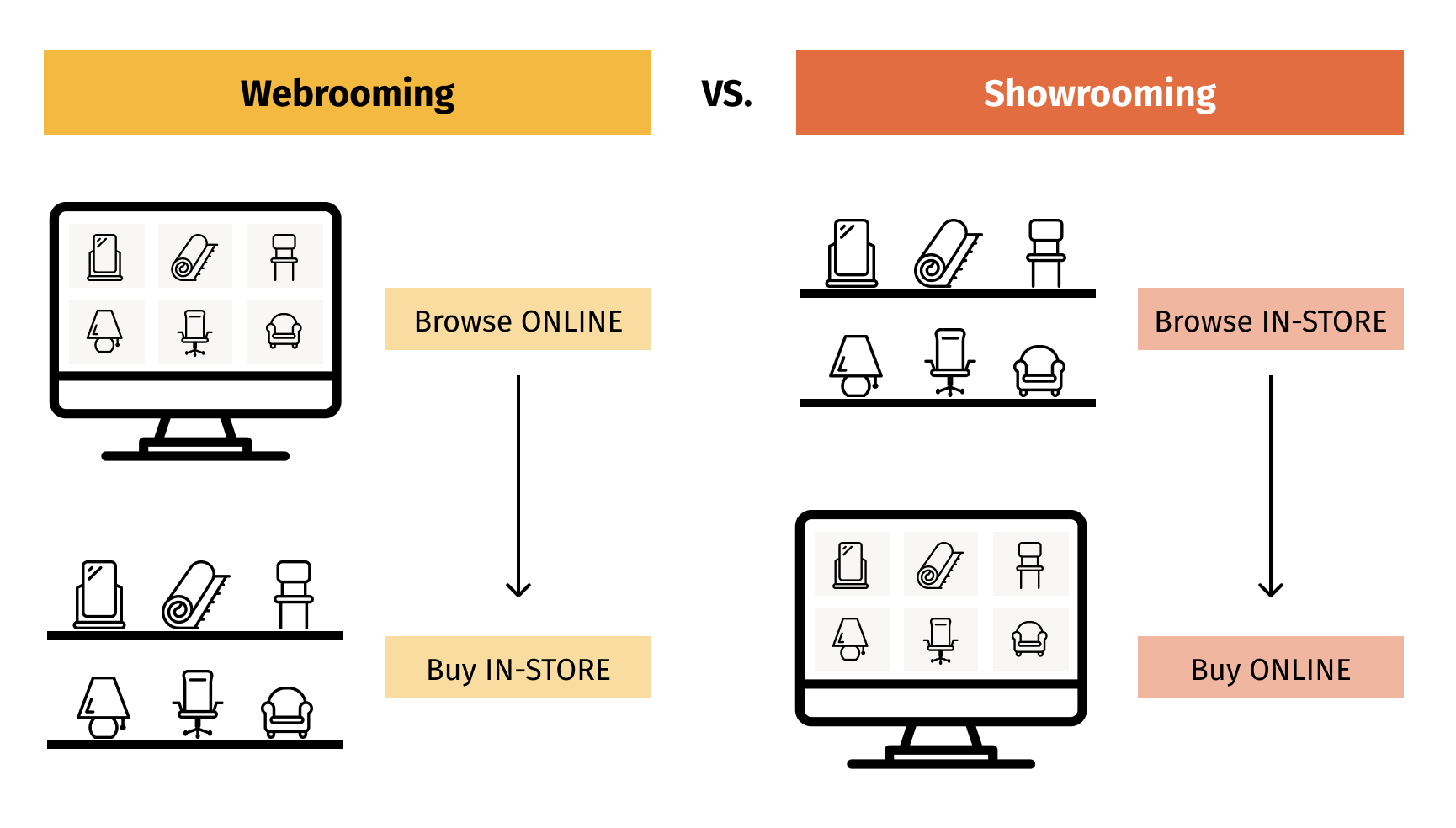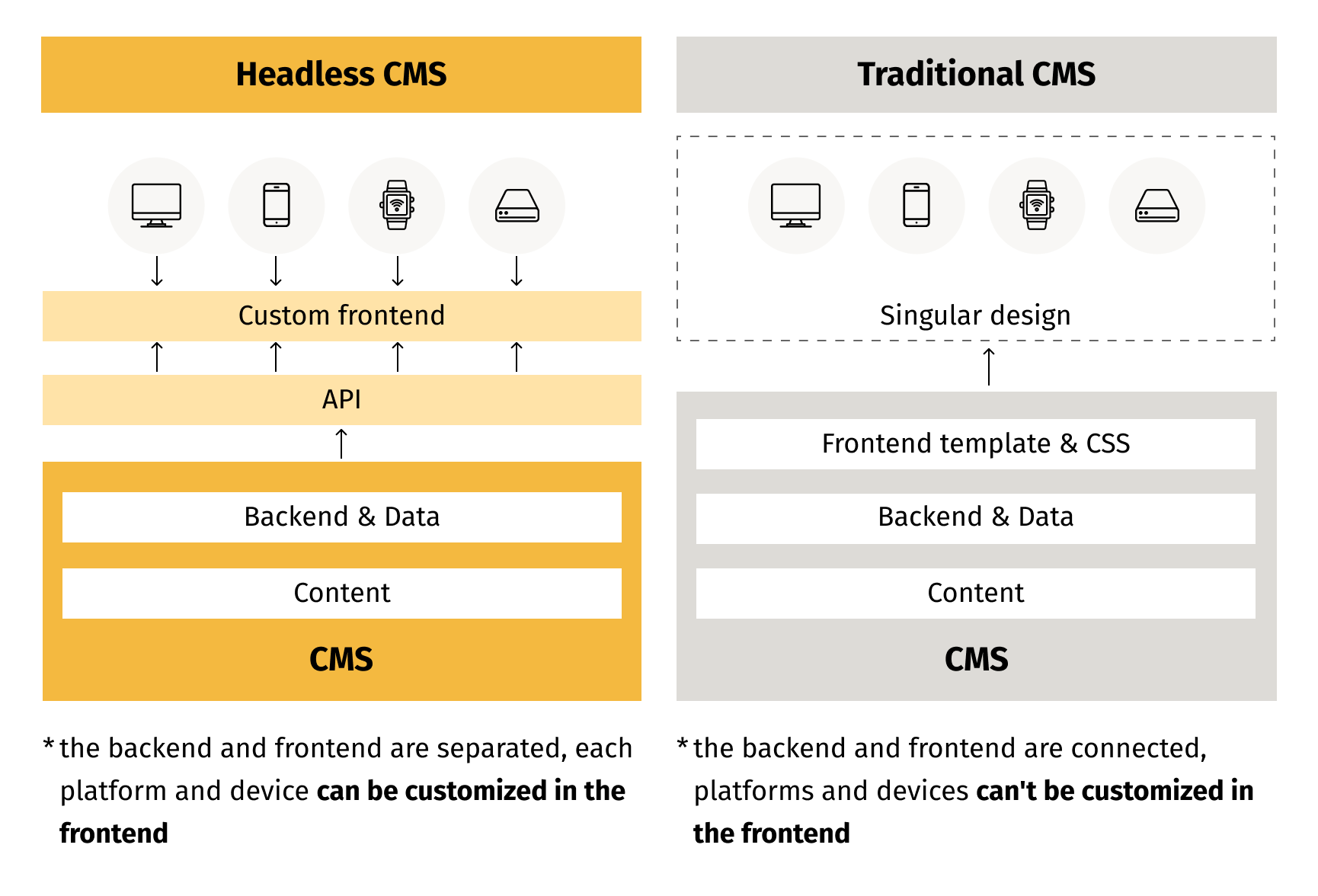
Why You Need an Omnichannel Customer Experience
Customers nowadays are seeking a holistic experience across channels when it comes to retail. Despite the increased popularity of online shopping, many still prefer an in-store experience. For example, one study shows that 70% of UK consumers over the age of 45 still prefer human interaction over self-service when shopping. On the other hand, the same study also estimated that 51% of consumers spend more money online than they would in-store.
Add to this the fact that not all products are suited for online-only sales. Take prescription eyeglasses for example. According to the 2020 Internet Influence Report from The Vision Council, only 14.1% of 2020 eyewear buyers directly purchased their glasses online. However, about 30% still used the internet to compare prices, find the type or style of eyeglasses they wanted to buy or find the ECP or retailer they bought from in-person later.
Furthermore, the consumer behavior shift toward online buying as a result of COVID-19 has made an omnichannel strategy more important than ever. In research conducted by BigCommerce and Retail Dive, 46% of retail executives said they plan to increase their investment in omnichannel retailing moving forward, compared to their plans prior to COVID-19. As Andrew Lipsman wrote in a May 2020 report on Frictionless Commerce: “The timeless truths of retail are that consumers will always want better prices, selection and convenience. With the internet having already driven major progress on the first two customer needs, attention is now turning to convenience.”
These statistics and buying scenarios show that an omnichannel commerce approach is fundamental to maximizing conversions and meeting customer needs across all channels in 2022.
Let’s face it — the convergence of channels is now a necessary reality for digital commerce companies. How can they achieve it? Read on to find out!
What is Omnichannel Commerce?
Omnichannel commerce is an approach to sales that ensures a seamless and personalized customer experience across online and offline channels.
Adopting an omnichannel CX approach empowers retailers to:
- Integrate data collection for in-store and online customer interactions for deeper levels of personalization;
- Sell online and offline for increased revenue;
- Offer omnichannel inventory visibility and multiple fulfillment and shipping options for added customer convenience;
- Meet customers where they are and provide personalized messaging and recommendations for increased conversions.
Is omnichannel the best approach though? It helps to know the difference between alternative approaches.
What is the Difference Between Single-channel, Multichannel, and Omnichannel Retail?
Single-channel retail services are provided from only one distribution channel, whether it is an e-commerce platform or a traditional brick-and-mortar store. While this option may have been sufficient in the past, customers today want brands to meet them where they are — in both physical and digital environments. Despite being cheaper and easier to launch, it is difficult to maintain a competitive edge with a single marketing channel.
Multichannel retail enables customers to use several channels to make purchases - from brick-and-mortar stores to online platforms. The goal of this strategy is to provide multiple purchasing channels for consumers with different preferences.
Omnichannel does virtually the same, yet both digital and physical customer experiences are fully integrated. As you’ll discover further on in this article, “showrooming” and “webrooming” belong to this type of retail as they enable customers to seamlessly switch to the shopping mode they prefer without having to change vendors.

Despite being somewhat similar, the last two approaches have some key differences — the omnichannel approach is unified, enabling channels to work collectively, while multichannel still separates the digital experience from the traditional brick-and-mortar experience.
Further, omnichannel digital commerce is far more customer-focused. It enables brands to deliver a positive customer experience at every touchpoint. Some go as far as using AR and VR to superimpose photos of clothes onto a customer’s avatar, while others open virtual showrooms where consumers can enjoy 3D virtual sampling of products. Such practices enable customers to make purchases in the comfort of their own homes, while brands can serve multiple users simultaneously — a win-win situation!
Omnichannel commerce examples
Some brands are getting creative with the concept of omnichannel by opening showrooms where customers can see and feel the products they want in a brick-and-mortar environment, and then purchase them online — often at a lower price. This “showrooming” trend has grown in popularity in recent years as it provides customers with a seamless blend of offline and online convenience.
The reverse experience, “webrooming”, is just as popular, and allows customers to browse for products online and then pick them up in a local store. This way, customers save on shipping costs and delivery waiting times.
Both these phenomena took off due to changing consumer behaviors and demands during the pandemic. With this, the rise of omnichannel customer experience solutions like click-and-collect options, and beacon technology that enables easy retailer-client communication have also become more commonplace in the digital commerce landscape.

Showrooming and webrooming in particular, help businesses save on brick-and-mortar rental costs since massive amounts of space to display every single product is no longer necessary. At the same time, customers do not have to overcome choice paralysis — another win-win!
What are the Benefits of Omnichannel Commerce?
Higher Customer Satisfaction and Loyalty
Consumers want to interact with a brand in ways that are most convenient for them. Omnichannel customer experience gives them the option to do so. In fact, UC today reports that 9 out of 10 buyers prefer an omnichannel shopping experience.
By adopting an omnichannel approach, businesses can easily gain a competitive advantage in the market. A recent Harvard Business Review survey of 46,000 shoppers found that only 7% shopped exclusively online, 20% were in-store-only shoppers, and 73% of customers moved across multiple channels. Furthermore, on average, omnichannel buyers spend 4% more time in stores and more than 10% online, and are more likely to recommend the store to their friends and family and buy there again — proving the significance and importance of omnichannel journeys.
Omnichannel Customers Buy More
The same study shows that customers who stick to brands that offer omnichannel experiences tend to spend more. More importantly, the more channels the vendor provides, the higher the sales. A study conducted by Google, Ipsos MediaCT, and Sterling Brands concludes that 75% of customers are more likely to visit a store if they find information about the retailer online, and thus, are more likely to purchase goods there too.
Improved Data Collection
Besides having the option to shop across channels, consumers want personalized shopping experiences too. Omnichannel businesses have the opportunity to use customer intelligence and personalization components to analyze data obtained through shopping cards, cookies, referral programs, POS systems, and any other customer touchpoints across channels. By capturing and analyzing data from multiple channels, brands are all the more equipped to address customer needs, thus creating unique and personalized experiences that generate more sales. 80% of customers who receive personalized offers and engagement, in fact, are more likely to convert and return to buy again. Contrariwise, if they fail to find something that fits their needs, they’re bound to look elsewhere.
Increased Visibility
By offering your customers real-time inventory visibility across channels, you are making your products and product information more accessible and easier to purchase. Couple this with multiple fulfillment options, and you’ll see your conversions soar.
Increased Sales
Omnisend’s 2020 Marketing Automation Statistics Report shows that businesses that adopt an omnichannel strategy with more than 3 channels achieve a whopping 287% higher purchase rate. This goes to show that customers really appreciate personalized convenience, and that developing a unified, seamless experience definitely pays off.
How to Build an Efficient Omnichannel Strategy for Your Business
Building a robust omnichannel CX is far from an easy task, but definitely not an impossible one. If you take an incremental, composable commerce approach, you don’t have to disrupt your entire business ecosystem to start seeing results. Composable commerce uses modern technologies and approaches like MACH (Microservices, API, Cloud, Headless) to leverage each specific channel for its unique benefits to create an omnichannel digital experience platform with best-in-class capabilities.
But before you decide on the technology you’ll use to curate omnichannel customer experiences, you need to have a well-informed strategy in place. Here we list some of the things you should consider before you start building out a fully-fledged omnichannel customer experience platform.
Understand what your customers want
Using your existing analytics or customer intelligence solution, analyze your customers’ behavior to find out how they discover new products, and what items they are more likely to buy online/in-store. Focus on the following for a comprehensive overview of what’s working, what’s not, and why:
- The type of device most used for shopping online;
- The most visited website pages;
- The most often searched keywords;
- Best-selling products or services;
- Conversion rates from different channels;
- When people are making the most purchases;
- Which channels are most often used to interact with your business;
- Customer churn rates and the potential reasons why;
- Product discovery and recommendations performance, i.e. how many customers are converting through search and recommendations.
This, and any other data you can gather, will ultimately help you focus on the channels that generate the most sales and help you decide which commerce technologies to integrate or optimize to ensure a smooth customer experience and a high ROI.
Expand your business across multiple digital channels
Act based on the data you've obtained and focus on the most popular digital channels. Focusing on mobile marketing is no longer an option, rather a necessity, as nearly 45% of all consumers use their smartphones to shop these days. Make sure that your brand’s website UI is mobile-friendly, adapted to all types of smartphones, build user-friendly mobile applications and focus on social media targeting. All these channels should operate cohesively to meet the demands of all user groups.
Consider a headless CMS platform for content marketing
A headless CMS platform is a backend content management system in which the content repository is disconnected from the frontend presentation layer. It has numerous advantages as compared to traditional CMS — from cloud hosting and delivery to microservices architecture. Headless CMS platforms enable easy content distribution across different devices via APIs and help your customers access content via their preferred channels. Further, you can speed up campaign implementation as there is no need to manually change any content. Make one change that will be intrinsically applied on multiple platforms. Headless CMS platforms are cloud-based, which means more flexibility in terms of content creation, and cost-efficiency, and faster time to market in terms of implementation.

Integrate your digital and in-store channels
While digital commerce and retail teams might be completely different in what they do, customers expect a unified experience whether they’re shopping online or in-store. Cross-projects and staff training can help teams engage in experience exchange and generate ideas to improve customer engagement. Further to this, a single source of truth for customer data empowers employees across departments to personalize experiences across channels.
Also, consider implementing these omnichannel features:
- Enable buy online, pickup in-store (BOPIS) options for the customers who would rather collect their purchases themselves instead of waiting for delivery and paying extra for it.
- Offer Wi-Fi in your brick-and-mortar stores so that customers can instantly access product reviews and check out other available options online.
- Implement omnichannel loyalty programs for personalized rewards and offers online and in-store.
- Use a modern inventory management system for real-time, up-to-date inventory information across channels.
- Think outside of the box and consider AR for in-store virtual experiences, where customers can “try on” clothing or other items via an interactive mirror.
- Use in-store virtual shopping assistants to recommend products, answer questions about products, direct customers to where certain products are, advise on product availability and so on.
- Optimize your product discovery journey with vector search and visual search for more accurate and personalized search results.
The options are endless — the more effort you make to fuse your brand's retail channels, the more sales your business will generate.
The future of omnichannel customer experience
The future of omnichannel digital commerce is promising: we are now witnessing the adoption of VR showrooms and universes where customers can emerge into a fully unique experience without leaving the comfort of their homes. Digital commerce brands are even venturing into the Metaverse with 3D digital products, while offline interactions are becoming more focused on customer needs and building stronger, more holistic brand perceptions.
Ready to deliver exceptional omnichannel customer experiences?
We have already worked with 7 of the 25 largest retailers in the US to enter the new era of digital commerce and thrive through it, and we’re ready to help you too.
